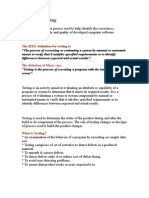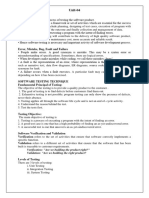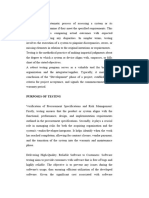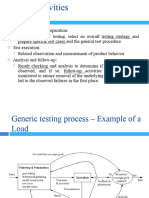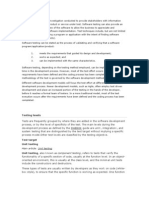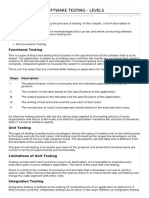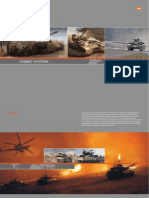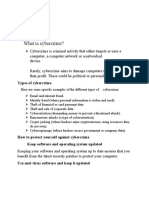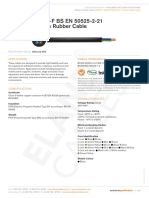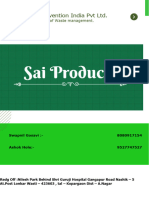0% found this document useful (0 votes)
84 views4 pages6.system Testing
The document outlines the purpose and types of software testing, emphasizing the importance of discovering errors and ensuring functionality meets requirements. It details various testing methods including unit testing, integration testing, functional testing, system testing, white box testing, and black box testing, each serving specific objectives. Additionally, it highlights the significance of user acceptance testing and reports successful test results with no defects encountered.
Uploaded by
Jaya RajCopyright
© © All Rights Reserved
We take content rights seriously. If you suspect this is your content, claim it here.
Available Formats
Download as DOCX, PDF, TXT or read online on Scribd
0% found this document useful (0 votes)
84 views4 pages6.system Testing
The document outlines the purpose and types of software testing, emphasizing the importance of discovering errors and ensuring functionality meets requirements. It details various testing methods including unit testing, integration testing, functional testing, system testing, white box testing, and black box testing, each serving specific objectives. Additionally, it highlights the significance of user acceptance testing and reports successful test results with no defects encountered.
Uploaded by
Jaya RajCopyright
© © All Rights Reserved
We take content rights seriously. If you suspect this is your content, claim it here.
Available Formats
Download as DOCX, PDF, TXT or read online on Scribd
/ 4














